The Sparkling History of Christmas Ornaments
Ah, the Yuletide season. The smell of freshly baked cookies, the warmth of the fire, and the glittering glow of festive baubles adorning the Christmas tree. But have you ever stopped to wonder about the history of Christmas ornaments?
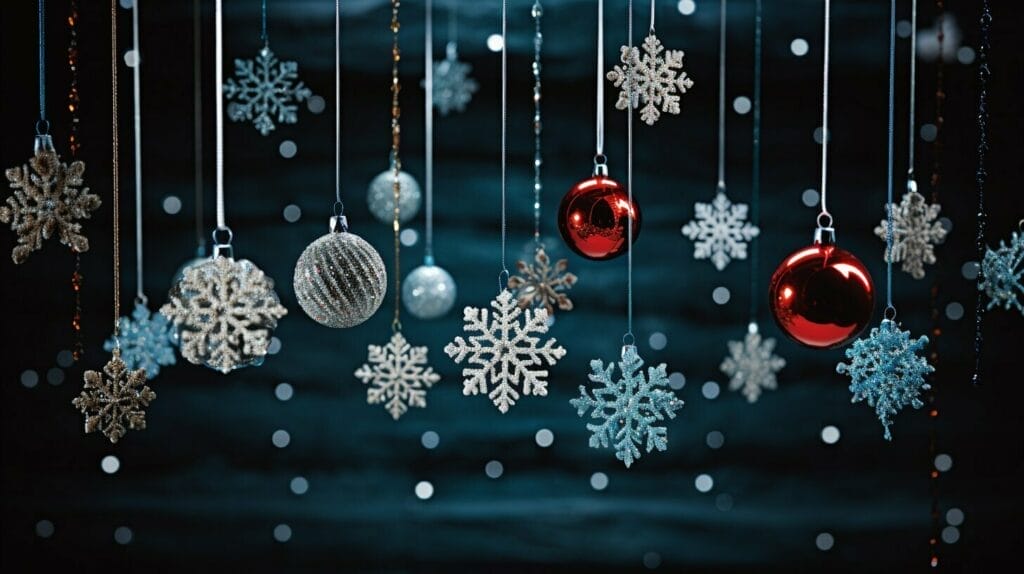
Believe it or not, the history of Christmas ornaments dates back centuries, and they have gone through quite the evolution to become the sparkling decorations Christmas tradition we know and love today. From simple homemade ornaments to exquisitely crafted glass and fabric creations, the story of Christmas ornaments is a fascinating one.
Quick Summary
- The history of Christmas ornaments is a rich and fascinating one that dates back centuries.
- Ornaments have evolved from simple homemade decorations to glittering glass and fabric creations.
- The tradition of adorning Christmas trees with ornaments is deeply embedded in holiday celebrations around the world.
- From baubles and tinsel to stars and handmade creations, there are endless types of Christmas ornaments to choose from.
- Exploring the history and meaning of ornaments adds a deeper layer of appreciation to this beloved holiday tradition.
The Origins of Christmas Ornaments
So, you’re ready to learn about the origins of those shimmering holiday decorations that bring sparkle and joy to your Christmas tree every year? Well, get ready to be dazzled!
The history of Christmas ornaments dates back centuries ago when holiday decorations were a lot simpler than they are today. The first-ever recorded use of Christmas ornaments was in Germany during the 16th century. Back then, people used simple holiday decorations such as apples, nuts, and candles to adorn their Christmas trees.
It wasn’t until the 18th century that Christmas ornaments started to evolve into the decorative baubles we know and love today. Handcrafted glass ornaments made in Germany were considered a luxury item and became popular during this time. Their popularity quickly spread to other European countries, and by the 19th century, the Christmas tree was a common sight in many homes.
The first American-made Christmas ornaments were introduced in the 19th century, and they were made of wood, tin, and paper. By the early 20th century, glass ornaments were being mass-produced in the United States. These ornaments were initially expensive and considered a luxury item but became more affordable over time, making them accessible to more families.
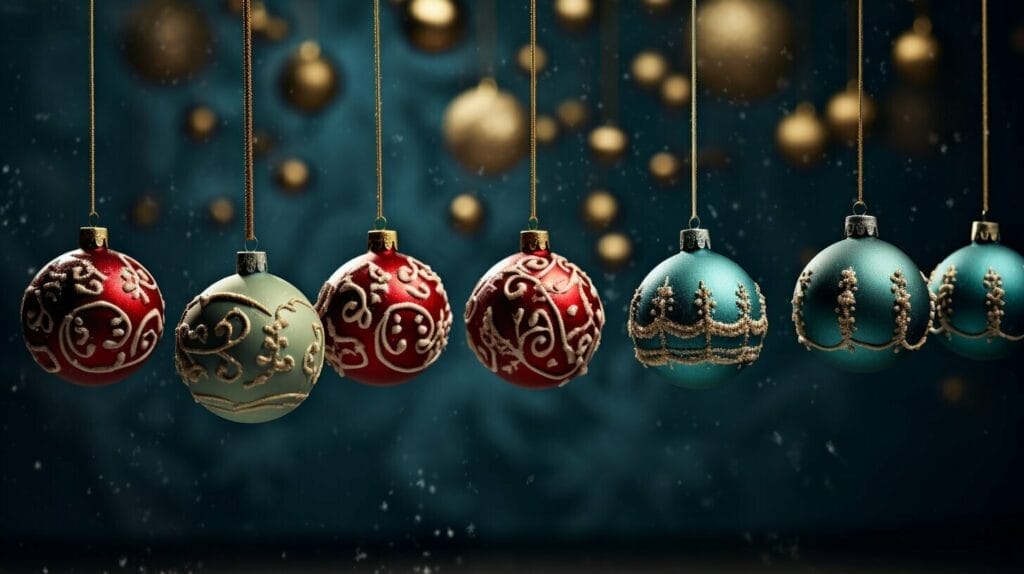
Today, Christmas ornaments come in a wide variety of types, from the classic glass and wooden baubles to the fanciful and creative ones made of fabric, tinsel, and even food! The possibilities are endless.
So, there you have it! From the humble beginnings of simple apples and candles to the glittering baubles of today, the history of Christmas ornaments is a fascinating one. Now that you know a bit more about their origins, it’s time to deck the halls with your own holiday tree baubles!
Evolution of Christmas Ornaments
During the Victorian era, the popularity of Christmas ornaments surged, and elaborate handmade decorations adorned trees and mantles. In the mid-century, minimalist styles emerged, featuring sleek and modern designs. Today, we see a mix of vintage-inspired designs, modern motifs, and DIY creations, showcasing the endless possibilities for holiday decorations.
Types of Christmas ornaments have also evolved over time. We now have a vast array of choices, including traditional glass baubles, wooden ornaments, fabric creations, sparkling tinsel, and the iconic star tree toppers. With so many options available, it’s easy to find the perfect ornaments to reflect your personal style and holiday spirit.

As we continue to explore the world of Christmas ornaments, we can appreciate the rich history and evolution behind these festive decorations. From simple beginnings to dazzling works of art, these ornaments represent the joy and magic of the holiday season.
Global Christmas Ornament Traditions
Embark on a festive journey as we traverse the globe, uncovering unique and captivating Christmas ornament traditions that bring a special sparkle to the holiday season in various countries.
Germany: A Wonderland of Traditional Ornaments
Our first destination is Germany, renowned for its enchanting Christmas markets, or “Weihnachtsmärkte.” Here, you’ll discover a plethora of ornamental gems, ranging from delicate glass baubles to intricate wooden figurines, each reflecting the country’s rich heritage in craftsmanship. Notably, the charming wooden Christmas villages, meticulously adorned with tiny, detailed ornaments, captivate visitors with their quaint beauty and detailed artistry.
USA: Hallmark and Balsam Hill’s Cherished Keepsakes
In the United States, Hallmark has been crafting cherished keepsake ornaments since 1973, offering a vast array of designs that span classic Disney characters to popular cultural icons and movie franchises like Star Wars. These ornaments have woven themselves into the fabric of American Christmas traditions, adorning trees in numerous households.
Balsam Hill, on the other hand, is synonymous with luxury in the Christmas realm, providing not only breathtakingly realistic artificial trees but also a stunning array of ornaments. From elegant glass icicles to rustic burlap pieces, Balsam Hill caters to every aesthetic, ensuring every tree can be a reflection of individual style and taste.
Mexico: The Art of Piñatas
Journeying to Mexico, the vibrant tradition of piñatas takes center stage. While piñatas are commonly associated with parties, during Christmas, star-shaped piñatas symbolizing the Star of Bethlehem are prominently featured. These festive ornaments, often filled with sweets and treats, add a lively and interactive element to the holiday celebrations.
Japan: Intricate Kimekomi Ornaments
In Japan, Kimekomi ornaments, also known as “Kimekomi Ningyo,” are a sight to behold. Originating from doll-making, these ornaments involve tucking fabric into grooves of carved wooden surfaces, creating intricate and colorful patterns. These beautiful, handcrafted ornaments add a touch of Japanese elegance and tradition to Christmas celebrations.
Ukraine: The Legend of the Christmas Spider
Ukraine brings us the enchanting legend of the Christmas spider. It’s customary to decorate Christmas trees with spider web-shaped ornaments, symbolizing prosperity and good fortune. The shimmering webs, often made from beads and wire, glisten amidst the tree branches, turning them into a spectacle of light and shadow.
Sweden: The Yule Goat
In Sweden, the Yule Goat, or “Julbocken,” is a prominent figure during the festive season. Straw goat ornaments, often adorned with red ribbons, are popular decorations, symbolizing harvest and fertility. The Yule Goat also has ties to various Christmas traditions, including being a gift-bringer, and is a distinctive feature of Swedish holiday décor.
South Africa: Beaded Ornaments
South Africa boasts a rich tradition of beadwork, and this extends to their Christmas decorations. Beaded ornaments, crafted meticulously by local artisans, come in various shapes, sizes, and patterns, reflecting the vibrant culture and artistic spirit of the nation.
In this global exploration of Christmas ornament traditions, it’s evident that each country brings its own unique flair and symbolism to the festive season. From the handcrafted to the commercially produced, from traditional to modern, these ornaments not only add aesthetic appeal to holiday celebrations but also serve as a reflection of cultural heritage and shared stories of yuletide joy across the world.
Symbolism and Meaning of Ornaments
You’ve probably hung countless ornaments on your Christmas tree over the years, but have you ever stopped to think about their significance? Each ornament has its own story to tell and adds a unique touch to your holiday tree trimmings. So, let’s dive deeper into the symbolism and meaning behind these festive decorations.
First off, we have the traditional classic ball-shaped ornaments. These baubles originated in 19th-century Germany and were originally made of blown glass. The round shape was meant to symbolize fruit and prosperity, while the colors represented different virtues such as red for love and green for hope.
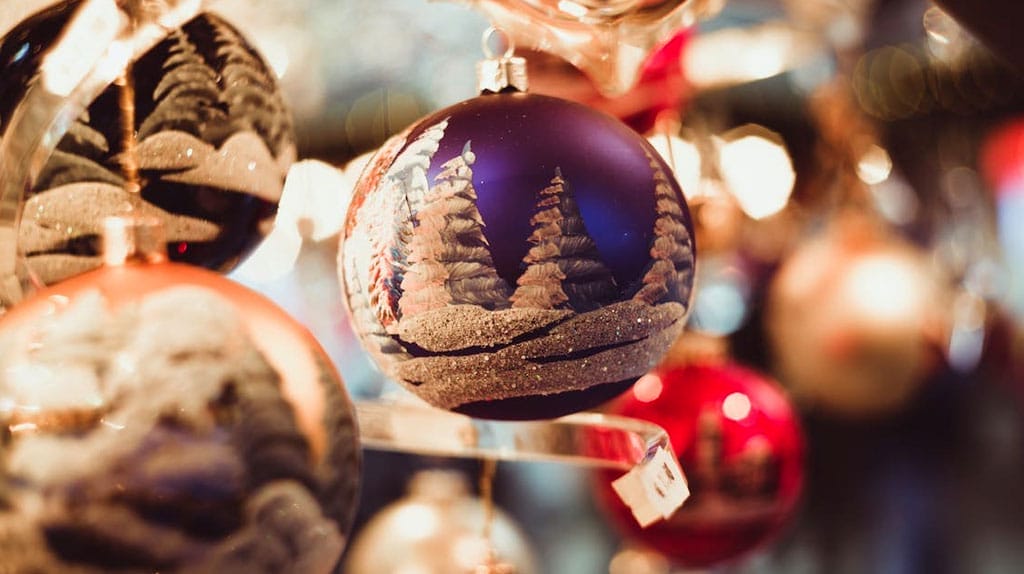
Another popular ornament is the star. Traditionally, the star represents the Star of Bethlehem that guided the three wise men to the birthplace of Jesus. It’s often used as a tree topper and adds a touch of radiance to your holiday decor.
Now, let’s talk about the more crafty ornaments, such as the handmade fabric ornaments. These ornaments are often passed down from generation to generation and carry sentimental value. They’re also great for showcasing your DIY skills and adding a personal touch to your holiday tree.
Pro tip: If you’re feeling particularly creative, try making your own felted wool ornaments. They’re a fun and easy way to add some texture to your tree and impress your guests with your crafting skills.
Lastly, let’s not forget about the ornaments that represent holiday traditions, like the nativity scenes, mistletoe, and holly. These ornaments add a touch of nostalgia and remind us of the true meaning of Christmas. Plus, they make for great conversation starters with your family and friends.
So, as you hang your ornaments on the tree this year, take a moment to appreciate the symbolism and meaning behind each one. And don’t be afraid to get creative with your own DIY ornaments. Who knows, maybe one day your handmade masterpiece will become a cherished family heirloom.
Glass Ornaments
These beautiful creations have been around for centuries, with some of the most famous glass ornaments coming from Germany and Eastern Europe. Today, glass ornaments come in all shapes and sizes, from traditional round globes to whimsical animal shapes and even depictions of famous landmarks. They add a touch of luxury and elegance to any tree.
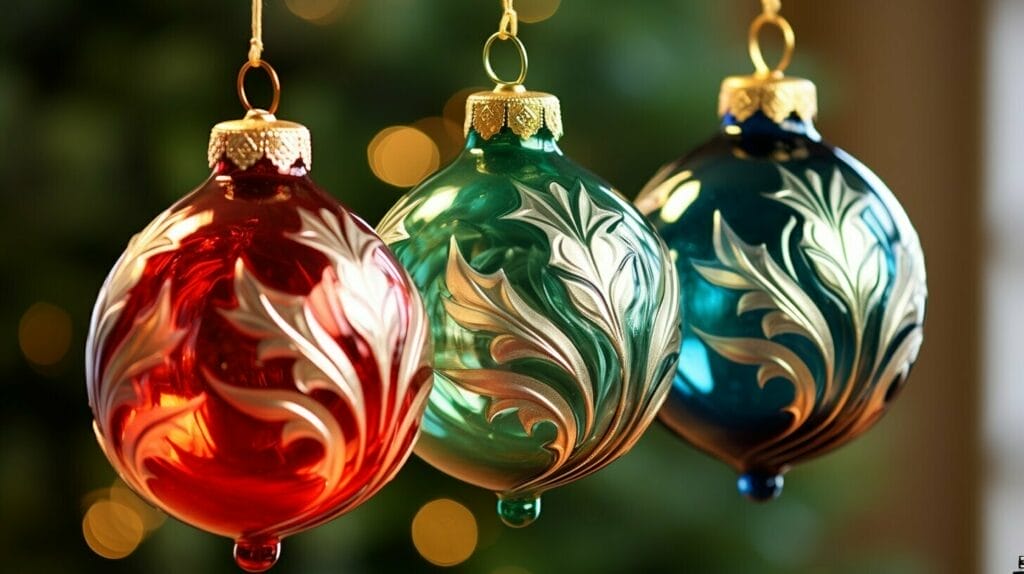
Wooden Ornament
Next, we have the timeless appeal and rustic elegance of wooden ornaments, which have perennially graced our Christmas trees with their understated charm and warmth. Whether meticulously carved or delicately painted, these ornaments encapsulate a myriad of festive symbols and figures, each telling its own little holiday story.
Wooden ornaments, often crafted from various types of wood – from rich mahogany to light birchwood, present a plethora of designs and motifs that have become synonymous with the holiday season. From the delicate intricacy of snowflakes, each with its unique pattern, and the sweet allure of gingerbread men, often adorned with painted icing and candy features, to the jolly depictions of Santa Claus in his iconic red attire and reindeer, symbolizing the spirited flight on Christmas Eve, these ornaments weave a tapestry of festive narratives.
Moreover, wooden ornaments often serve as a canvas for artisanal creativity, where skilled craftsmen and craftswomen bring to life scenes of winter wonderlands, serene nativities, and lively holiday activities. They might depict children gleefully sledding down snowy hills, serene villages blanketed in a winter’s white, or even the quiet beauty of a forest where every tree is elegantly draped in a coat of snow.

The rustic charm of wooden ornaments not only enhances the aesthetic appeal of our Christmas trees but also infuses our spaces with a touch of warmth and coziness, reminiscent of cherished moments spent by a crackling fire on a chilly winter night. They evoke memories of family gatherings, where stories are shared amidst the gentle glow of tree lights, reflecting softly on the wooden figures hanging gracefully from the pine branches.
Furthermore, wooden ornaments often transcend mere decoration, becoming heirlooms passed down through generations, each piece holding memories of Christmases past and embodying the spirit of yuletide traditions. They become not just adornments but tangible fragments of our holiday histories, connecting generations through shared stories of festive celebrations.
In essence, wooden ornaments, with their natural and earthy tones, serve as a gentle reminder of the simplicity and authenticity that can be found in the holiday season. Amidst the glimmer of tinsel and the sparkle of glass baubles, they stand as symbols of unadorned joy and genuine togetherness, inviting us to bask in the pure, unfiltered spirit of Christmas, and to find joy in the simple, heartfelt moments that define the festive season.
Fabric Ornaments
Originating from times when resources were scarce, families would craft their own ornaments using fabric scraps, contributing to a tradition that was not only economical but also deeply personal. These ornaments, often shaped like stars, trees, or angels, were sometimes stuffed with straw or leftover fabric to give them a three-dimensional appearance.
The practice of creating fabric ornaments also became a cherished family activity, where generations would come together to craft, share stories, and prepare for the festive season, thereby weaving a tapestry of memories and traditions that would be passed down through the years.
In contemporary times, fabric Christmas ornaments have evolved into a popular medium for expressing creativity and personal style during the holidays. DIY enthusiasts and crafters utilize a myriad of techniques such as quilting, cross-stitching, and sewing to create ornaments that are not only decorative but also hold sentimental value.

Furthermore, these fabric ornaments have become a canvas for showcasing cultural and regional motifs, with designs reflecting local wildlife, traditional patterns, and iconic holiday symbols. In a world that is increasingly leaning towards sustainable practices, fabric ornaments also offer an eco-friendly alternative to plastic decorations, as they can be reused year after year, and even become heirlooms, passing on the spirit of Christmas to subsequent generations.
Baubles and Tinsel
The enchanting silhouette of a Christmas tree, adorned with glistening decorations, has become a symbol of the holiday season worldwide. Central to this festive tableau are the classic baubles and shimmering tinsel. These ornaments, with their rich history and tradition, have become indispensable to the Christmas decor repertoire.
Available in an expansive palette of hues ranging from deep crimsons to icy blues, and styles from vintage to contemporary, baubles and tinsel cater to every aesthetic preference. The versatility of these decorations ensures that whether one prefers a monochromatic theme or a vibrant, multi-colored display, there’s a perfect match waiting.
Metallic baubles, with their glossy finishes, and tinsel, with its delicate threads, are particularly adept at capturing and reflecting ambient light. This play of light, dancing across the tree’s branches, creates a mesmerizing spectacle that evokes feelings of warmth and nostalgia. The effect is akin to a constellation of stars twinkling in a wintry night sky, bringing a touch of cosmic wonder indoors.
For enthusiasts of opulence, these ornaments are a dream come true. They effortlessly infuse spaces with a sense of glamour and glitz, turning ordinary settings into festive wonderlands. The allure of baubles and tinsel lies not just in their visual appeal but also in their ability to transform spaces into realms of magic and fantasy.
Star Tree Toppers: The Pinnacle of Festive Decor
Among the myriad of Christmas decorations, the star tree toppers hold a special place in the hearts of many. Synonymous with the festive season, these iconic symbols of Christmas are not just mere ornaments; they encapsulate the essence of the holiday’s spirit and history.
Crafted from a diverse array of materials, star tree toppers can range from the glitzy allure of gold and silver to the rustic charm of natural wood. For those seeking a touch of elegance, glass star tree toppers, often hand-blown and intricately designed, offer a delicate beauty that catches the light in a mesmerizing dance.
Placed atop the Christmas tree, these star tree toppers serve as the crowning glory, drawing eyes upwards in admiration. They are not just decorative pieces but also poignant reminders of the celestial star that guided the Three Wise Men on their journey to Bethlehem.
Every time we glance at these radiant toppers, we’re transported to that sacred night, reminding us of the true essence of the holiday – hope, joy, and the spirit of giving. Whether you prefer the shimmering brilliance of metallic stars or the earthy tones of wooden ones, star tree toppers are a cherished tradition, bringing warmth and wonder to homes during the festive season.
DIY Christmas Ornaments
Why settle for store-bought holiday tree trimmings when you can show off your creative side with DIY Christmas ornaments? Not only will you save money, but you’ll also have unique decorations that are sure to impress your guests.
These aren’t your grandma’s DIY ornaments either. With modern-day materials and techniques, the possibilities are endless. From glittery glass balls to personalized photo ornaments, you can make something that truly reflects your style and personality.
| Materials | Cost | Difficulty |
|---|---|---|
| Clear Glass Ornaments Glitter Mod Podge Paintbrush | $10-$15 | Easy |
| Wooden Ornaments Acrylic Paint Paintbrush Twine | $5-$10 | Easy |
| Felt Fabric Embroidery Floss Needle Stuffing | $15-$20 | Intermediate |
Not sure where to start? Check out Pinterest and other online resources for inspiration and step-by-step tutorials. You can also gather supplies from your local craft store or order them online.
Don’t be afraid to experiment and let your imagination run wild. You might just come up with the next trend in holiday tree trimmings.
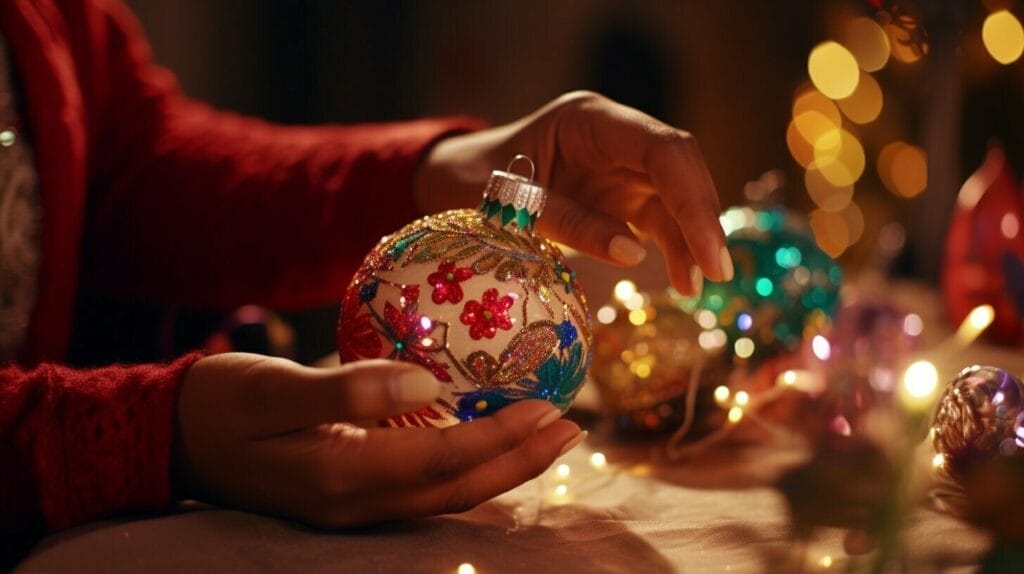
“DIY ornaments? Yes, please! Not only are they a fun way to spend an afternoon, but they also make for great gifts. Plus, you can tell your friends you’re basically a professional artist now.”
Christmas Ornament Traditions and Practices
Now that you’ve learned about the fascinating history and evolution of Christmas ornaments, let’s dive into the beloved traditions and practices associated with these delightful holiday decorations.
The Display of Nativity Scenes
One of the most cherished Christmas traditions is the display of nativity scenes. These intricate and beautiful recreations of the birth of Jesus Christ serve as a reminder of the true meaning of the holiday season. Whether you prefer a simple manger scene or a more elaborate portrayal of the Christmas story, nativity scenes are a timeless tradition that adds warmth and spirituality to your holiday decor.
The Use of Mistletoe and Holly
Another beloved Christmas custom is the use of mistletoe and holly. It is said that hanging mistletoe in the home dates back to the ancient Druids, who believed it had magical powers to ward off evil spirits. Today, the tradition has taken on a more romantic connotation, with couples stealing kisses beneath the mistletoe. Holly, with its prickly leaves and bright red berries, is also a popular decoration during the holiday season. It symbolizes the crown of thorns placed on Jesus’ head during the crucifixion and adds a festive touch to your home decor.
The Hanging of Ornaments on the Tree
Of course, no discussion of Christmas ornament traditions would be complete without mentioning the time-honored practice of hanging ornaments on the tree. From classic glass baubles to handmade ornaments crafted by little ones, each decoration has a special meaning and memory behind it. Whether you prefer a rustic and natural theme or a glitzy and glamorous one, your tree is a reflection of your family’s unique style and traditions.
FAQ
What is the history of Christmas ornaments?
Christmas ornaments have a sparkling history that dates back centuries. They initially started out as simple holiday decorations and have evolved into the festive baubles we know and love today, bringing joy to the Yuletide season.
Where did Christmas ornaments originate?
The origins of Christmas ornaments can be traced back to early holiday decorations. They have evolved from humble beginnings to become the glittering baubles that adorn our Christmas trees.
How have Christmas ornaments evolved over time?
Christmas ornaments have undergone a remarkable evolution throughout history. They have transformed into a wide variety of types, including glass, wood, fabric, and more, adding charm and beauty to holiday celebrations.
What are some global Christmas ornament traditions?
Christmas ornament traditions vary across the globe. From the famous Christmas markets to beloved brands like Hallmark and Balsam Hill, different cultures have their own unique ways of celebrating the holiday with ornaments.
What is the symbolism and meaning behind ornaments?
Christmas ornaments hold symbolic significance, adding depth and meaning to our holiday tree trimmings. Each ornament carries its own message, contributing to the overall festive atmosphere.
What types of Christmas ornaments are there?
The world of Christmas ornaments is diverse and enchanting. From traditional baubles to intricate glass creations, handmade fabric ornaments, shimmering tinsel, and the iconic star tree toppers, the options are endless.
How have Christmas ornaments changed throughout historical eras and styles?
Christmas ornaments have gone through various transformations over time. From the ornate designs of the Victorian era to the sleek styles of the mid-century, and the enduring appeal of vintage and modern ornaments, they reflect the spirit of each era.
Can I make my own DIY Christmas ornaments?
Absolutely! DIY Christmas ornaments offer a world of creative possibilities. Tap into your artistic side and create unique and personalized holiday tree trimmings that will truly make your tree shine.
What are some Christmas ornament traditions and practices?
Christmas ornaments are deeply intertwined with holiday traditions. From the display of nativity scenes to the use of mistletoe and holly, and the customs surrounding the hanging of ornaments on the tree, these traditions add extra magic to the festive season.




